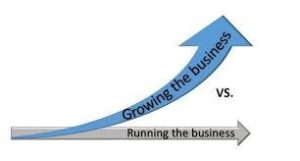
January 25, 2023
In the digital world,
it’s the playmakers that define success

Are you a playmaker or a position holder?
Unless you have been living under a rock, you must at least be aware of if not materially confronted by the game changing impact digital technology disruption has had on organizations of all sizes across all industries.
As such, I find it astonishing to read the results of a recent McKinsey Global Survey of 2,190 companies in pursuit of digital transformation that showed two-thirds of those companies were “just treading water, taking no decisive action, and consequently achieving little or no success.”
Even though there is a growing body of evidence that transforming into a digital enterprise equates to sustainable competitive advantage, there are still many more position holders than playmakers.
So that begs the question, how do you pivot from being a position holder to being a playmaker?
How to pivot from your backfoot (position holder) to your front foot (playmaker)

A good starting point to successfully make this pivot is a clear and concise statement of the intent to do so. For example, when Satya Nadella took over as CEO of Microsoft in 2014, he clearly stated that the company was going to pivot from its current backfoot business model (on premise on desktop) to its new front foot business model (Cloud first Mobile first). This unleashed numerous internal playmakers to develop and deliver a series of new products and services along with a new operating model, businesses processes, and go-to-market gameplan that delivered one of the greatest business turnarounds ever.
Another way to make this transformative shift is to move from imitating best practices to creating next practices.
The Executive Next Practices Institute, a think-tank of hundreds of top executives and thought leaders, have described the differences this way:
- Best practices are past driven – repetitive formulas for tactical business problems.
- Next practices are future-driven strategic solutions that enable you to better anticipate and respond to disruptive issues that have embedded uncertainties, risks, and variables.
In my work with C-Suite Executives, we have developed our own descriptions of the difference between best and next practices as shown on the chart below:

Position holders run the business while playmakers grow the business

CEOs, their Senior Leadership Teams, and their Boards of Directors need to proactively widen their leadership aperture in order to expand the impact and value digital technology can bring to their organizations.
To do that effectively they need to reprioritize and redeploy scarce resources and budgets away from run the business to grow the business initiatives. They must empower employees across the organization to think like playmakers (business owners with a P&L mindset) not position holders (function heads with a cost center mindset).
Use the 4 Zones framework to enable playmakers across your organization
The C-suite executives I’m working with who aspire to unleash more playmakers in their organization have found our 4 Zones framework and toolset as shown below to be of immense value. It has enabled them to engage and motivate multiple stakeholders both internally and externally to embrace the challenge and opportunity to transform their companies into digital enterprises.

From their annual planning and budgeting process to their new product and service development initiatives, they have utilized this framework to address the current reality that up to 80% of their resources and budgets are allocated to running the business not growing the business. This new approach has resulted in shifts as dramatic as 25% run the business 75% grow the business.
Early adopters have used the 4 Zones framework to segment their grow the business initiatives in the following way:
- Are they sustaining innovations or disruptive innovations?
- Are they enabling systems productivity and cost optimization?
- Are they increasing business unit performance and revenue growth?
- Are they enabling business model transformation?
This process results in the creation of a business growth portfolio which can be used to prioritize and align future resource investments with mutually agreed upon critical business outcomes.
In addition, instead of using resource capacity and budgeting constraints to make prioritization decisions, the following three questions are used to help make go/no-go decisions:
- Should we do it? Does it align with and support critical business outcomes?
- Can we do it? Do we have the relevant skills, capabilities, and tools to achieve the desired outcome?
- Did we do it? Do we have the right metrics up front to measure the achieved outcome vs. the desired outcome?
This approach moves business growth prioritization decisions from a budget exercise to a business value creation exercise that helps clarify when it makes sense to say no instead of yes.
As always, I am interested in your comments, feedback and perspectives on the ideas put forth in this blog. Please e-mail them to me on linkedin. And, if this content could be useful to someone you know please share it here:



